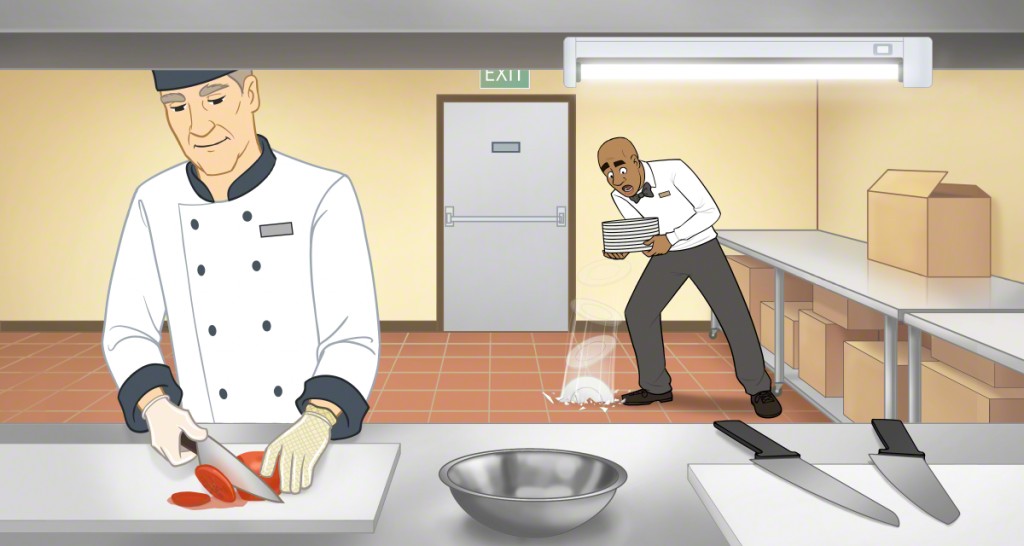Finding a hair or fingernail in your food is not only unappetizing but also a potential health risk. These objects are classified as physical hazards, which are foreign and potentially dangerous items that can contaminate food. Food handlers must be vigilant in preventing these hazards.
Common Examples of Physical Hazards in Food
Physical hazards can range from naturally occurring items to contaminants introduced during food handling. Here are some common examples:
- Naturally Occurring Hazards: Fish bones, fruit pits, seeds, and crustacean shells. These need to be properly removed during food preparation.
- Environmental Contaminants: Broken glass, metal shavings, dirt, insects, hair, fingernails, jewelry, and packing materials. These can enter food due to negligence or accidents.
 Physical Hazards on a Plate
Physical Hazards on a Plate
Factors Affecting the Severity of Physical Hazards
It’s a common misconception that larger, more visible objects are more dangerous. In reality, smaller, less noticeable items can be more harmful. Customers are more likely to ingest these smaller items without realizing it, leading to potential injury.
Preventing Physical Hazards: A Guide for Food Handlers
Effective prevention strategies are crucial in minimizing the risk of physical hazards. Here’s what food handlers need to know:
Removing Naturally Occurring Hazards
Demonstrate and practice the correct methods for removing natural hazards like bones from fish or pits from fruits. This includes careful inspection and the use of appropriate tools.
Maintaining Personal Hygiene
Adhering to strict hygiene practices is essential. This includes:
- Tying back long hair to prevent strands from falling into food.
- Keeping fingernails clean, short, and unpolished. Nail polish can chip and become a physical hazard.
- Avoiding the use of jewelry, especially earrings or necklaces, that could easily fall into food.
Proper Wound Care
Ensure that all wounds are properly bandaged with brightly colored bandages. Use gloves when handling food with a bandage on your hand. This prevents bandages from falling into food and contaminating it.
Cleaning Up Accidents Thoroughly
Accidents happen, but it’s crucial to clean up any debris immediately and thoroughly. This includes broken glass, spilled food, or any other potential contaminants. Use proper cleaning procedures to ensure no residue remains.
Maintaining Equipment Safety
Regularly inspect and maintain all kitchen equipment to ensure it is safe to use. This includes keeping knives sharp and in good condition, covering light bulbs in food preparation areas to prevent shattered glass from contaminating food, and ensuring all machines are functioning correctly.
The Importance of Employee Training
Preventing physical hazards is a critical responsibility for all food service employees. Encourage a culture of vigilance and emphasize the importance of following proper procedures. Regular training sessions can reinforce these practices and ensure that all staff members are aware of the risks and how to mitigate them.
The Impact of Physical Hazards on Customer Satisfaction
Finding a foreign object in food can severely damage a restaurant’s reputation. Even if the food is otherwise excellent, a single incident can deter customers from returning. Moreover, the potential health risks associated with ingesting physical hazards can lead to legal issues and further damage the business.
Conclusion
Preventing physical hazards is essential for maintaining food safety, protecting customers, and preserving the reputation of your establishment. By implementing effective prevention strategies and providing comprehensive training to food handlers, you can minimize the risk of contamination and ensure a safe dining experience for everyone. Remember, food safety is everyone’s responsibility.
